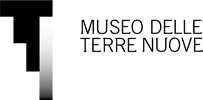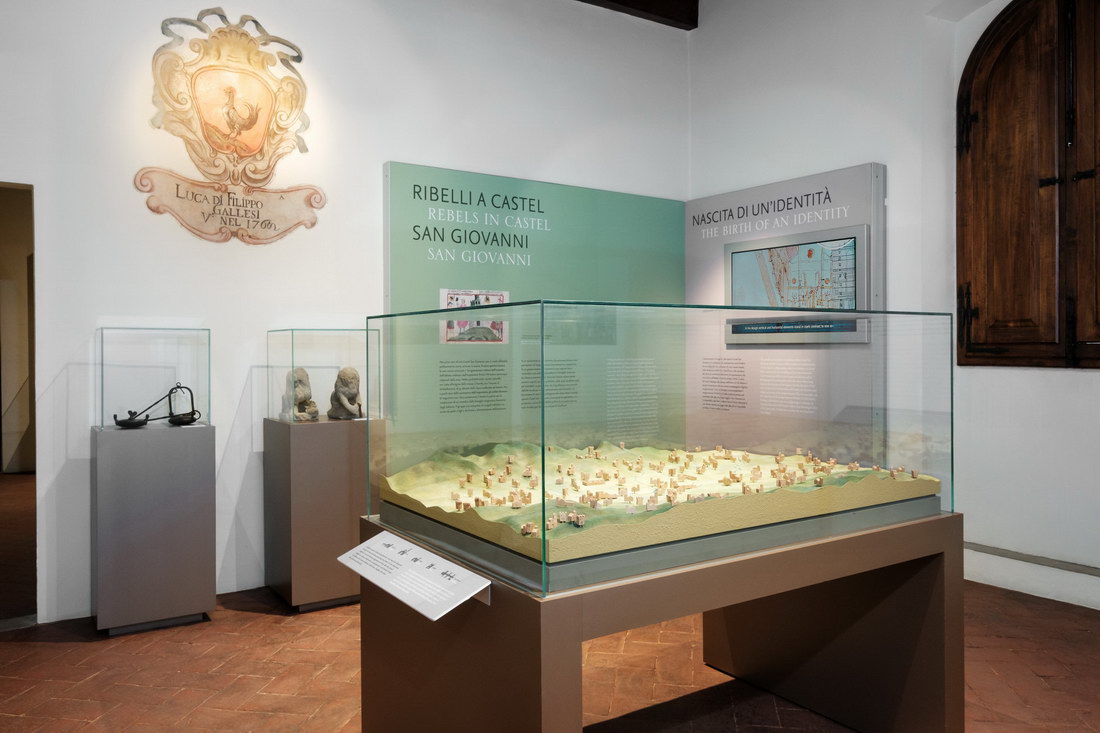
Room 12
LIVING IN CASTEL SAN GIOVANNI
Florence made a great effort to ensure that, with the passage of time, the people of San Giovanni acquired a sense of belonging to the community, thereby avoiding internal struggles and rebellions. Some special cases from between the fourteenth and fifteenth centuries are presented, with a focus on how, once the Black Death had passed, San Giovanni became economically independent of the ‘mother city’; the returns sent by the Sangiovannesi to the Florentine office of the Land Registry in 1427 paint a picture of prosperous social and economic conditions. Among the important people who left Terra Nuova to find their fortune in the big city are the painter Masaccio and the historian Poggio Bracciolini.
The room also features a model of the Upper Valdarno, indicating the newly founded towns.
Insights
LIVING IN CASTEL SAN GIOVANNI
When the Florentines expressed their desire to estblish the three new towns, they named them ‘Terre seu comunitates’: ‘Lands or rather: communities’. In the disjunctive seu, in this subtle redundancy, we can grasp a deeper meaning than what might appear to be a purely governmental decision. The Florentine Signoria, which in previous years had already been marked by controversies, difficulties and failures concerning newly founded settlements, perceived the risks inherent in the birth of three new small towns; yet, sensing their potential and desiring their implementation, it proceeded to resolve on their genesis. Certainly, Florence supervised their material construction, investing the project with the most refined ideals of the time, but it also committed itself to their full and effective realisation, which could only be achieved if the ‘walled Terre’ became ‘communities’: groups of people bound together by social ties, groups of citizens united not only by living in the same place but also by living the destiny of that place and feeling part of it. It is in this sense of community, so fine to think about and so difficult to implement, that lies the deepest sense not only of the Florentine ‘Terre Nuove’ but also of all the centres founded in the Middle Ages and throughout the ages.
(The text is taken from the museum guide, edited by Claudia Tripodi and Valentina Zucchi, Sagep, 2024)
A REST AND MARKET CENTRE
During the fifteenth century, Castel San Giovanni was an essential stopover for the needs of merchants and travellers in transit along the great road linking the Arezzo area to Florence and then on to Pisa and the sea. Already in the fourteenth century, there were at least five innkeepers in San Giovanni, compared to four in Figline, three in Castelfranco and one in Montevarchi. The town also housed inns and taverns recognisable by signs, offering an ‘osteria overo abergho, detto l’Abergho della Stella’ (‘inn or hotel, known as the Stella’). Castel San Giovanni’s market was also an important element of attraction and wealth for its own community. The commercial vocation of the new foundation grew progressively during the fourteenth century: with the presence of 5 apothecaries, 19 beccai (butchers), and a moneychanger, along with other activities, Castel San Giovanni was able to compete with the other large towns in Valdarno. Success increased activities and favoured, at times, the formation of mixed companies with Florentine merchants or those from nearby towns. To offer an example recalled by the Land Registry of 1427, this was the case of Gualtieri di Agnolo and Papo di Nanni Vinucci, both from Castel San Giovanni, and of Piero di Fruosino from Figlino, who had set up a partnership to start a company of apothecaries on 1 November 1426. In addition to the workshop, the three declared that they rented a warehouse in Terranuova [Bracciolini], had a bronze mortar from Antonio di Bartolomeo da Figline and companions, and had Francesco di Antonio del Berna da San Giovanni as their apprentice.
(The text is taken from the museum guide, edited by Claudia Tripodi and Valentina Zucchi, Sagep, 2024)


